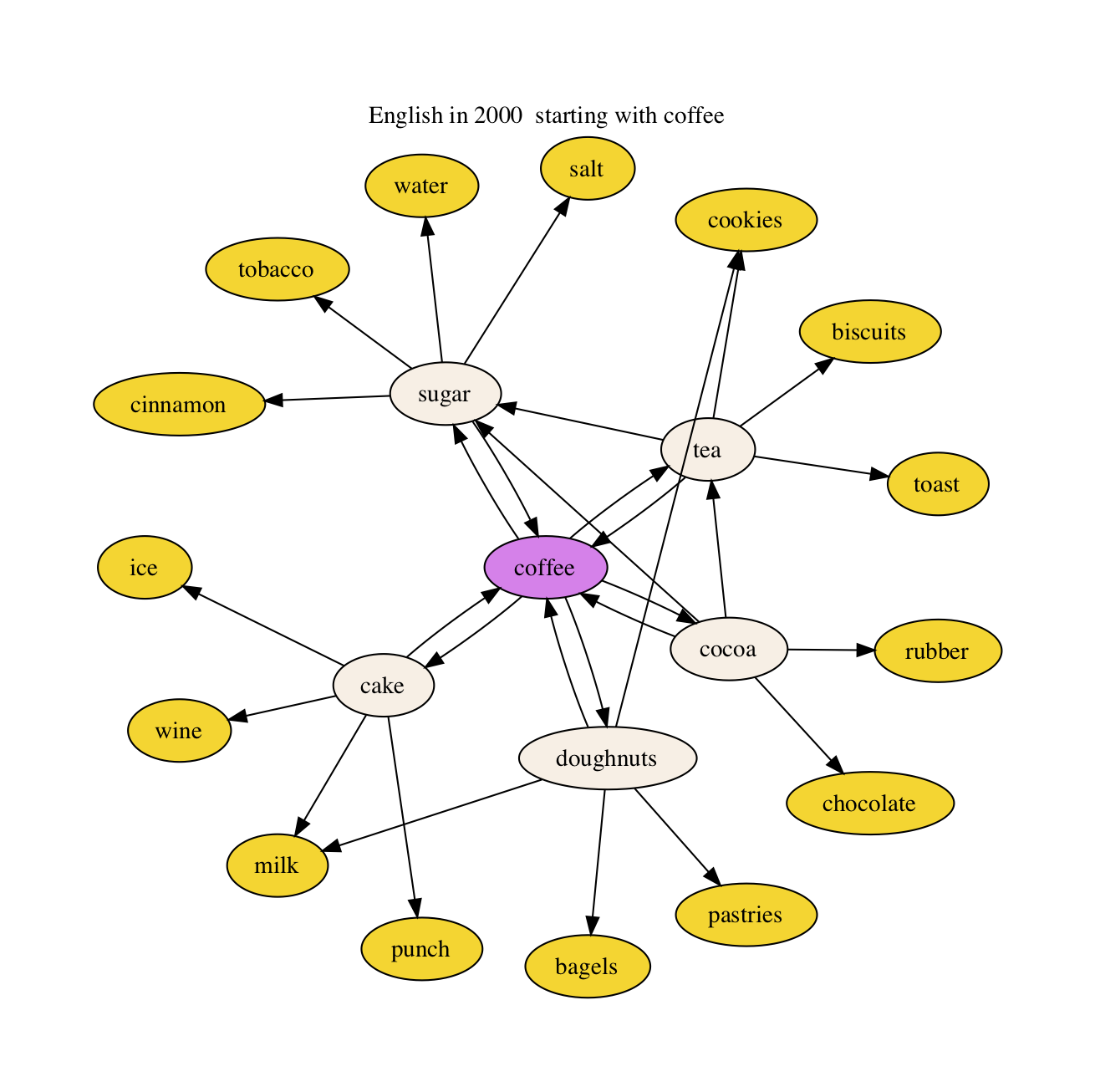Coffee and ?
What goes with coffee? Here's a view from 1900:

Just for fun, I've been looking at "conjoined" nouns via Google Ngrams Viewer and then visualizing the results as a network. The idea is simple: start with one noun and links are made to the most common nouns directly conjoined with it, in a given year. For each of those nouns, the process is repeated, and so on for a number of iterations. In the example above, repeated larger here, the starting word is coffee, the 5 most common nouns were chosen, and there were 2 iterations, looking in 1900.

It's just for fun, so just go ahead and play with it: Ngram Net.
Here's what coffee in 2000 looks like:

I find it fun to see which words are associated with each other in this way, sometimes struggling a bit to imagine the context of the phrase "X and Y." I also learn new words, even in English (like areca).
BUT, I can't take it too seriously, for two main reasons.
The first reason for not taking the networks seriously is that the search is just for word sequences, not true conjunction. For example, if the original book had the phrase ice cream and cake, the search would find cream and cake, since it (sadly) doesn't know about ice cream.
The second reason for not taking the networks seriously is that making a network from multiple iterations is misleading, since the initial word may not ever be conjoined with the words after the first iteration, and may not appear with them at all. Take a look at apples in 1900.
There are other smaller reasons for not taking the network too seriously, from the arbitrary collection of books in Google Ngrams, to my not including the Italian allomorph for "and" ed which is used when the following word starts with an e (or any vowel in more formal styles of writing). So words like erbe "herbs" will not be included as the second noun.
BUT ...
We shouldn't take ourselves too seriously, right? So I just have fun with it.
